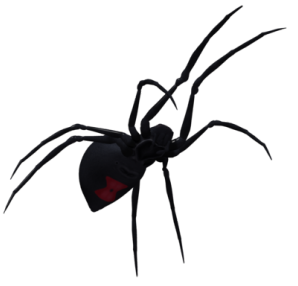Lycosidae, commonly known as wolf spiders, is a family of arachnids belonging to the order Araneae. With over 2,300 described species, they are a diverse and widespread group found in various habitats around the world. The name “wolf spider” derives from their hunting behavior, which resembles that of wolves, as they actively chase down their prey instead of building webs to catch it.
Wolf spiders exhibit a range of sizes, with the largest species reaching up to several centimeters in body length. They possess a stout and robust build, characterized by powerful legs that enable them to move swiftly and capture their prey with agility. Their eyes are arranged in three rows, with a prominent pair of forward-facing eyes providing excellent vision.
These arachnids are known for their distinctive hunting techniques. Instead of relying on webs to ensnare their prey, wolf spiders rely on their excellent eyesight and acute sense of touch. They actively roam their surroundings, stealthily tracking and ambushing their victims. This predatory behavior makes them skilled hunters, capable of capturing a wide range of insects, other spiders, and even small vertebrates.
Wolf spiders are found in a variety of habitats, including forests, grasslands, deserts, and wetlands. They are predominantly terrestrial creatures, often dwelling on the ground, under logs, or in crevices. Some species have adapted to aquatic environments, such as marshes and shores, and are even capable of diving and hunting underwater.
One intriguing aspect of wolf spider biology is their reproductive behavior. Males employ elaborate courtship rituals to attract females. Once mating occurs, females lay their eggs inside silken sacs, which they carry attached to their spinnerets or hold in their jaws. This maternal care is unique among spiders and is essential for the survival of the spiderlings. The young spiderlings climb onto their mother’s back and remain there until they are ready to venture out on their own.
Despite their somewhat intimidating appearance, wolf spiders are generally harmless to humans. They play a crucial ecological role as natural pest controllers, helping to keep insect populations in check. Their presence in various ecosystems contributes to the overall balance of the ecosystem.
The family Lycosidae, with its diverse species and fascinating hunting strategies, offers a captivating glimpse into the world of spiders. From their impressive predatory skills to their nurturing maternal instincts, wolf spiders continue to intrigue and fascinate both arachnologists and nature enthusiasts alike.
